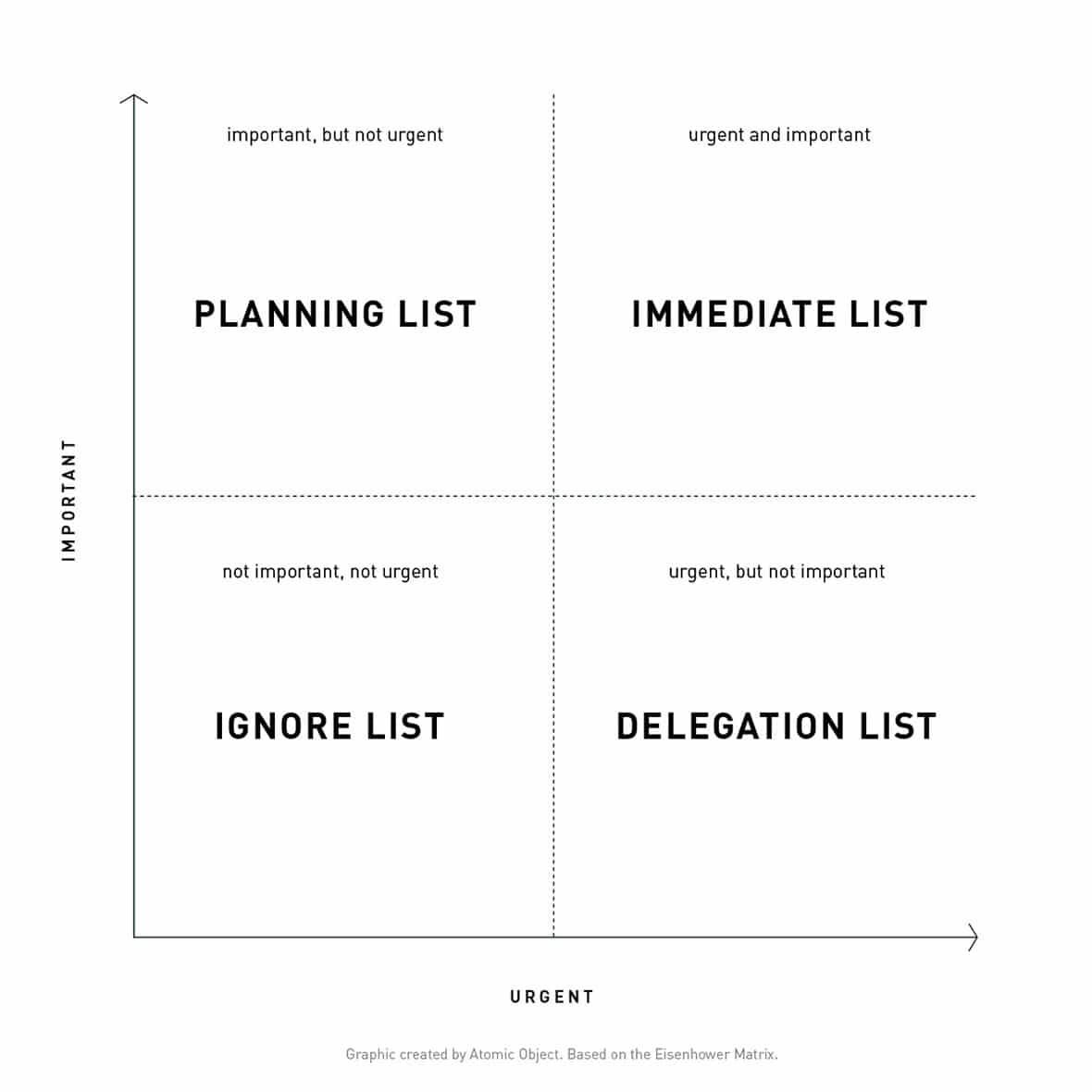Article summary
Dwight Eisenhower was a busy man. As Supreme Commander of the Allied forces in Europe during World War II and, later, President of the United States, he was expected to complete what must have been a mountain of tasks. How did he manage this continual stream of work?
Eisenhower looked at his tasks in two ways: importance and urgency.
- Important Tasks – Important tasks advance your goals. Not your co-workers’ goals, not your organization’s goals, not your client’s goals. Your goals. Though this may sound very self-serving on the surface, defining goals in this manner will help you delegate some tasks later.
- Urgent Tasks – Urgent tasks have tight deadlines which have important consequences if not completed.
- Just because a task has a deadline doesn’t mean it’s Urgent. Future deadlines that you have plenty of time to meet do not require your immediate attention and are, therefore, Not Urgent by definition.
- Just because a looming task has a consequence doesn’t mean it’s Urgent. If the consequence is nothing more than a minor inconvenience, than perhaps it’s best left out of the Urgent category if you are already at capacity.
Defining each task in terms of its Importance and Urgency is at the heart of Eisenhower’s method.
The Eisenhower Matrix
Once you define each of your tasks in terms of its Importance and Urgency, you can build an Eisenhower Matrix:

Immediate List (Important & Urgent)
The upper left corner of the matrix contains the tasks that require your immediate attention. These tasks not only help you achieve your goals but also have impending deadlines and consequences if they’re not completed.
If you have a lot of tasks in this quadrant, you should be trying to figure out why. Do you have too many responsibilities? Are you procrastinating or not planning ahead effectively?
Planning List (Important & Not Urgent)
In order to achieve your goals, these tasks need to be completed—just not right away. There are no immediate deadlines, but not making time for these tasks means you’re not working toward your goals.
You may need to plan time into your schedule to accomplish these tasks, but be sure you leave room in your calendar just in case something Important and Urgent makes itself known.
Delegation List (Not Important & Urgent)
These are the tasks with immediate deadlines that, if not completed, will have little to no impact on you personally. However, they may be very important to someone else in your organization. By delegating to someone who finds this task important, you significantly increase the odds that it’s completed.
Ignore List (Not Important & Not Urgent)
Unless there’s a shift in your priorities, tasks in this quadrant will probably never be completed by you. If they are important, they’re important to someone else, not you. These should either be delegated or forgotten.
Eisenhower’s method truly has instrumental in getting my task list in control. It’s simple rules for categorizing tasks not only has me focusing on getting the right things done in a timely fashion, but also has me constantly thinking about my goals. If you have an out-of-control task list, Dwight D. Eisenhower just may be able to help you out.

The delegate list is really an ignore list. Even if it is important to someone in your organisation and has no personal impact then ignore it. Why would you even go to the effort of delegating and the. Managing that delegation if it has no personal impact (remembering all the aspects of what you may or not consider personal impact). Quadrants look nice but sometimes you can ignore one of them, or delegate?